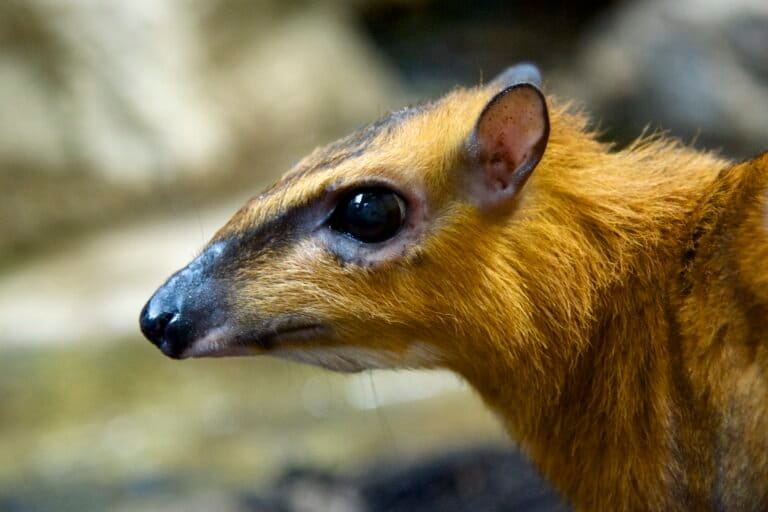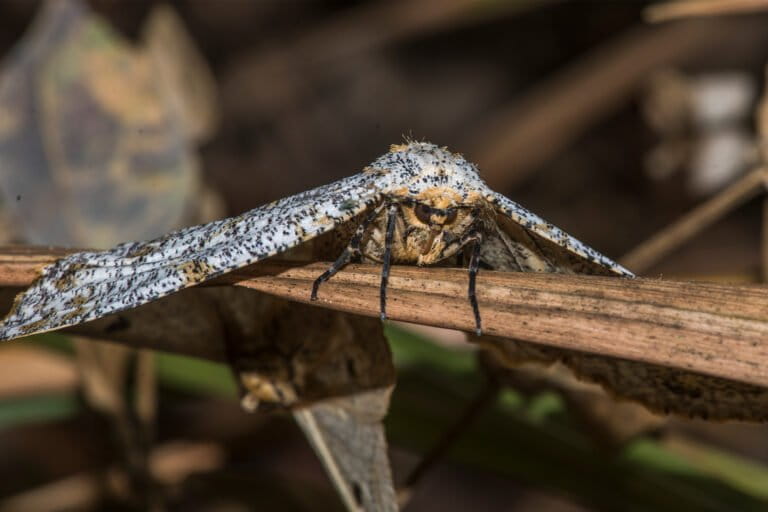- Numerous proposals and measures related to elephants and the ivory trade were debated at CoP17, including one that resulted in a call for the closure of domestic markets that contribute to the illegal ivory trade.
- The CITES Parties adopted enhanced traceability mechanisms that are crucial to efforts to develop sustainable fisheries for sharks and rays.
- Nine African lion range states had proposed that the African lion be uplisted from Appendix II, which permits commercial trade, to Appendix I, under which all commercial trade is prohibited, but that proposal was rejected.
Since September 24, representatives from more than 180 countries have been gathered in Johannesburg, South Africa for the seventeenth meeting of the Conference of the Parties (CoP17) to the Convention on International Trade in Endangered Species of Wild Fauna and Flora (CITES), which closed today.
Several key votes were held on measures to protect a variety of plant and animal species. For instance, the CITES Parties voted to transfer all eight species of pangolin from Appendix II to Appendix I of the Convention, thereby banning all international commercial trade. Countries also voted to ban international commercial trade in wild-caught African grey parrots.
Meanwhile, five separate proposals that grant stronger protections to hundreds of tree species were passed, including measures to restrict the international trade of all rosewood species within the genus Dalbergia — which comprises about 250 species native to tropical forests and more than 300 species worldwide.
“With much of the world’s wildlife threatened by poaching and unsustainable trade, governments had to take bold action here in Johannesburg and they did,” Theressa Frantz, the co-head of World Wildlife Fund’s (WWF) delegation to CoP17, said in a statement. “This conference can only be viewed as a major success for wildlife conservation.”
Here’s how several other proposals fared, relating to elephants and the ivory trade, rhinos and the rhino horn trade, rays, sharks, reptiles, and African lions.
Elephants and the ivory trade
Numerous proposals and measures related to elephants and the ivory trade were debated at CoP17, including one that resulted in a call countries that have a legal domestic market for ivory that is contributing to poaching or illegal trade to take all necessary legislative, regulatory, and enforcement measures to close markets for raw and worked ivory.
Though the call for closure of domestic ivory markets is not a binding resolution, its passage by consensus in Johannesburg was seen as a strong signal from the CITES Parties — including China, the largest ivory market in the world — that the ivory trade’s days are numbered.
Countries also backed the CITES-led National Ivory Action Plan (NIAP) process, which aims to identify nations that represent weak points in the illegal ivory trade. The plans were much improved, according to Simon Hedges, an ivory trade analyst for the Wildlife Conservation Society (WCS), and will now require problematic ivory source, transit, and consumer countries to address the issue or face trade sanctions. “Before this CITES CoP, the process for entering and exiting the NIAP process was unclear and, critically, the evaluation process for assessing progress with implementation was too reliant on self-assessment by the countries themselves,” Hedges said. “This has now been addressed with independent assessments by appropriate experts now included in the process.”
CITES Parties voted down proposals by Namibia and Zimbabwe to open legal ivory trade from their countries. That was the right decision for elephants, Ginette Hemley, head of WWF’s delegation, said in a statement: “African elephants are in steep decline across much of the continent due to poaching for their ivory, and opening up any legal trade in ivory would complicate efforts to conserve them. It could offer criminal syndicates new avenues to launder poached ivory, undermining law enforcement, and would undercut efforts to reduce the consumer demand that is driving the mass poaching.”
Hemley also welcomed the rejection of a separate proposal for elephant populations in Botswana, Namibia, South Africa, and Zimbabwe to be uplisted to Appendix I: “None of these proposals would have offered elephant populations any greater protection from the poachers. Indeed, the proposal to uplist four southern African populations to Appendix I could well have opened a back door to legal international trade.”
WCS’s Hedges noted that many people were disappointed or even shocked that the proposal to transfer elephants in Botswana, Namibia, South Africa, and Zimbabwe to Appendix I was defeated. “But those populations do not meet the CITES biological criteria for Appendix I, and so the defeat of the proposal was an affirmation of science-based decision-making in CITES,” he said. “More importantly, listing those population on Appendix I would have done nothing to change the present situation since all international trade in ivory is already banned under CITES.”
Rhinos and rhino horn trade
A ban on rhino horn trade has been in place since 1977, but Swaziland floated a proposal that it be allowed to sell more than 700 pounds of rhino horn from existing stockpiles as well as another 44 pounds to be harvested every year. The proposal was rejected overwhelmingly.
Peter Knights, CEO of WildAid, said in a statement that “Far from protecting rhinos, a legal trade in rhino horn would have simply provided a mechanism for laundering yet more horn from poached rhinos into the trade.”
Rays and sharks
The CITES Parties adopted enhanced traceability mechanisms that are crucial to efforts to develop sustainable fisheries for sharks and rays. All nine species of devil rays, all three thresher shark species, and the silky shark were listed in CITES Appendix II, restricting international trade to ensure their exports are both sustainable and legal.
Reptiles
Fifty-six species of reptiles threatened by the international exotic pet trade were recommended for new or increased protection under CITES.
Teresa M. Telecky, director of the wildlife department of Humane Society International (HSI), said, “We warmly congratulate those countries that proposed these species for new or increased listing under CITES to ensure protection from the cruel and destructive international trade in reptiles and amphibians for the pet trade.”
African lions
Humane Society International sad it was disappointed that the CITES Parties voted not to ban all commercial trade in African lions. Nine African lion range states — Chad, Côte d’Ivoire, Gabon, Guinea, Mali, Mauritania, the Niger, Nigeria, and Togo — had proposed that the African lion be uplisted from Appendix II, which permits commercial trade, to Appendix I, under which all commercial trade is prohibited.
There might be as few as 20,000 wild lions left in Africa, inhabiting just eight percent of their historic range, according to HSI. The primary threats to their survival are indiscriminate killing, depletion of prey, habitat loss, poorly regulated trophy hunting, and international trade in products like lion bone.
CITES parties decided to keep the African lion listed on Appendix II, though with an annotation that bans the trade in their parts, including bones, claws, teeth, and skulls sourced from wild lions. Masha Kalinina, international trade policy specialist at HSI, said, “It’s a bitter disappointment for the future survival of African lions that despite there being less than 20,000 of these magnificent wild cats left in the wild, CITES parties today only agreed the absolute minimum steps available to protect them.”
Overall, however, Wildlife Conservation Society’s VP of international policy, Susan Lieberman, said that science and wildlife conservation prevailed at CITES CoP17.
“The decisions made by the gathering countries were based on the best available scientific information,” Lieberman said. “Further, we were encouraged that governments fully embraced the precautionary principle by making decisions in the best interest of the species in the wild. After attending 11 CoPs, I strongly believe this was among the most successful CoP ever for wildlife.”















